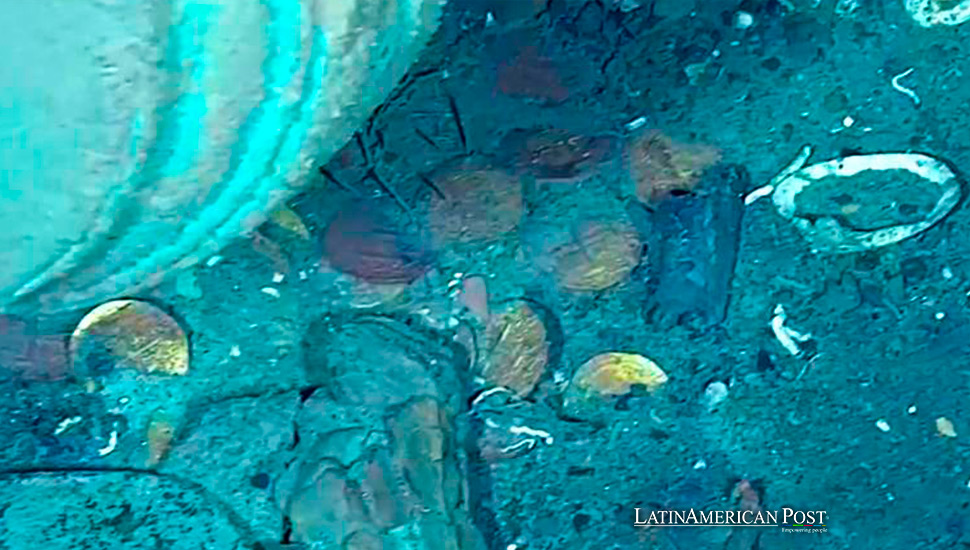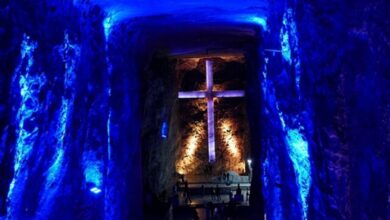Deep Dive into the Galeón San José Investigation into Former Colombian President Santos

The investigation into former Colombian President Juan Manuel Santos over the alleged archaeological intrusion of the Galeón San José illuminates a broader narrative of cultural heritage and international disputes in Latin America, reflecting the region’s complex colonial legacy and modern legal challenges.
In the intricate tapestry of Colombia’s history, the investigation into former President Juan Manuel Santos concerning the Galeón San José affair weaves a complex narrative of legal, historical, and cultural dimensions. This probe, initiated by the House of Representatives Commission of Investigation and Accusation, centers on allegations of “intrusion” and “plundering” of the Spanish ship, which sank in 1708 near Cartagena de Indias and was discovered in 2015. The case not only revisits a pivotal chapter in Colombia’s colonial past but also resonates with broader themes of cultural heritage and international maritime law across Latin America.
The Historical Odyssey of the Galeón San José
The saga of the Galeón San José dates back to the early 18th century, encapsulating an era rife with maritime conflict and colonial exploitation. As part of the Spanish Armada, this ship was laden with treasures from the Americas when it met its demise at the hands of English pirates. The ship’s sinking near Cartagena sealed a vast hoard of gold and silver coins within its hull, igniting legends and speculative hunts that spanned centuries.
The Colombian government’s discovery of San José’s wreckage in 2015 thrust this submerged treasure into the limelight, sparking a complex legal and cultural maelstrom. The ship’s contents, symbolic of a turbulent colonial era, led to a renewed dispute between Colombia and Spain, each asserting claims over the wreckage. Spain argued that international maritime laws and UNESCO conventions, which protect sunken state vessels as part of a country’s underwater cultural heritage, supported its claim to the ship.
At the heart of this unfolding drama is the investigation against Juan Manuel Santos, spurred by accusations from historian Francisco Hernando Muñoz. These allegations suggest potential disturbances at the archaeological site of the San José during Santos’s presidency, implicating the administration in possible intrusive and looting activities of the wreck. Scheduled legal proceedings aim to explore these claims further, shedding light on the governmental actions during the exploratory missions undertaken by Santos’s government.
The Wider Latin American Context
The controversy surrounding the Galeón San José exemplifies the broader challenges Latin American countries face in managing their colonial legacies and underwater cultural heritage. Nations across the region confront similar issues, balancing the preservation of historical artifacts with contemporary legal and ethical standards. This shared heritage dilemma highlights the ongoing struggle to reconcile the past’s remnants with present-day governance and cultural conservation efforts.
The Galeón San José’s case is a microcosm of global debates on underwater cultural heritage, where the rights of modern states over colonial-era shipwrecks are often contested. International frameworks, like the UNESCO 2001 Convention on the Protection of the Underwater Cultural Heritage, aim to guide resolving such disputes, advocating conserving submerged artifacts as part of humanity’s shared legacy.
Colombia’s Forward-looking Strategy
In response to these multifaceted challenges, Colombia has charted a path for the scientific exploration of San José, seeking to conduct a thorough and culturally respectful examination of the site. Led by the Ministry of Culture and supported by the National Navy, this initiative signifies a commitment to balancing rigorous scientific inquiry with the imperative of preserving cultural heritage. The approach hints at a potential collaborative future, possibly with Spain, to manage the ship’s legacy as a shared patrimonial treasure, fostering a spirit of international cooperation and mutual respect.
The notion of treating the Galeón San José’s wreckage as a shared heritage asset reflects a broader move towards collaborative management of cultural patrimony. This perspective is gaining traction globally as nations increasingly recognize the value of preserving historical artifacts as collective treasures that transcend individual ownership, promoting international partnerships in cultural heritage conservation.
Navigating the Depths of History and Diplomacy
The ongoing investigation into Santos over the Galeón San José affair transcends mere legal scrutiny; it delves into the depths of Colombia’s and Latin America’s colonial history, maritime heritage, and the intricate dance of international cultural politics. As the region continues to grapple with these complex narratives, the story of San José serves as a potent symbol of the enduring ties between past and present. It underscores the need for thoughtful navigation through history, culture, and international diplomacy to honor and preserve Latin America’s wealthy, tumultuous, and often submerged heritage.
In conclusion, the investigation into Juan Manuel Santos regarding the Galeón San José is more than a legal inquiry; it explores Latin America’s historical and cultural complexities. This narrative, interwoven with issues of colonial legacy, underwater heritage, and international legal frameworks, highlights the region’s ongoing journey to reconcile its past with present-day aspirations. As Colombia and the broader Latin American community seek to chart a course through these historical waters, the saga of San José remains a vivid reminder of the intricate balance required to safeguard the cultural and historical narratives that define the region. This balance is not just about resolving legal disputes or claiming territorial rights; it’s about acknowledging and preserving the shared heritage that forms the bedrock of Latin American identity.
As the investigation unfolds, it will likely draw attention to the need for nuanced policies and international cooperation in handling cultural artifacts. The case of the Galeón San José is emblematic of the broader challenges faced by nations in Latin America and beyond as they navigate the complexities of protecting underwater cultural heritage in an era of global interconnectedness.
Ultimately, the resolution of this case could set a precedent for future heritage disputes, emphasizing the importance of collaborative stewardship over competitive claims. It highlights the necessity of crafting a legacy that respects submerged treasures’ historical significance and cultural value while fostering international goodwill and shared custodianship.
Also read: Colombia’s ELN Peace Talks: A Journey Without a Map or Destination
The journey of the Galeón San José, from its tragic sinking to its rediscovery and the subsequent legal and diplomatic wrangling, encapsulates a broader narrative about the past’s influence on the present and the role of cultural heritage in shaping our collective future. As Colombia, Spain, and the international community delve into the depths of this maritime mystery, they are not just uncovering artifacts and treasures; they are unraveling the threads of history that bind us all in a shared story of human endeavor, loss, and rediscovery.




